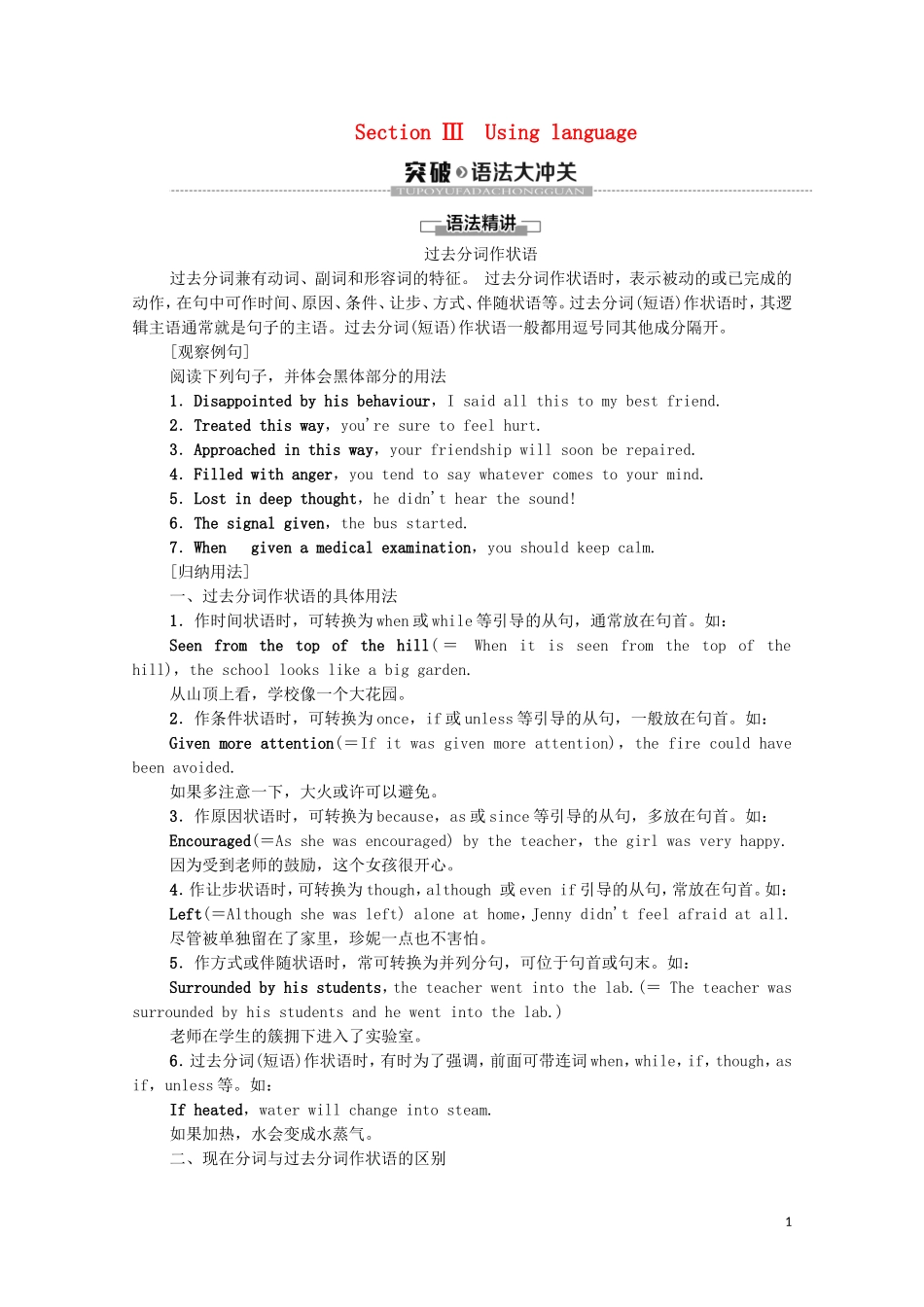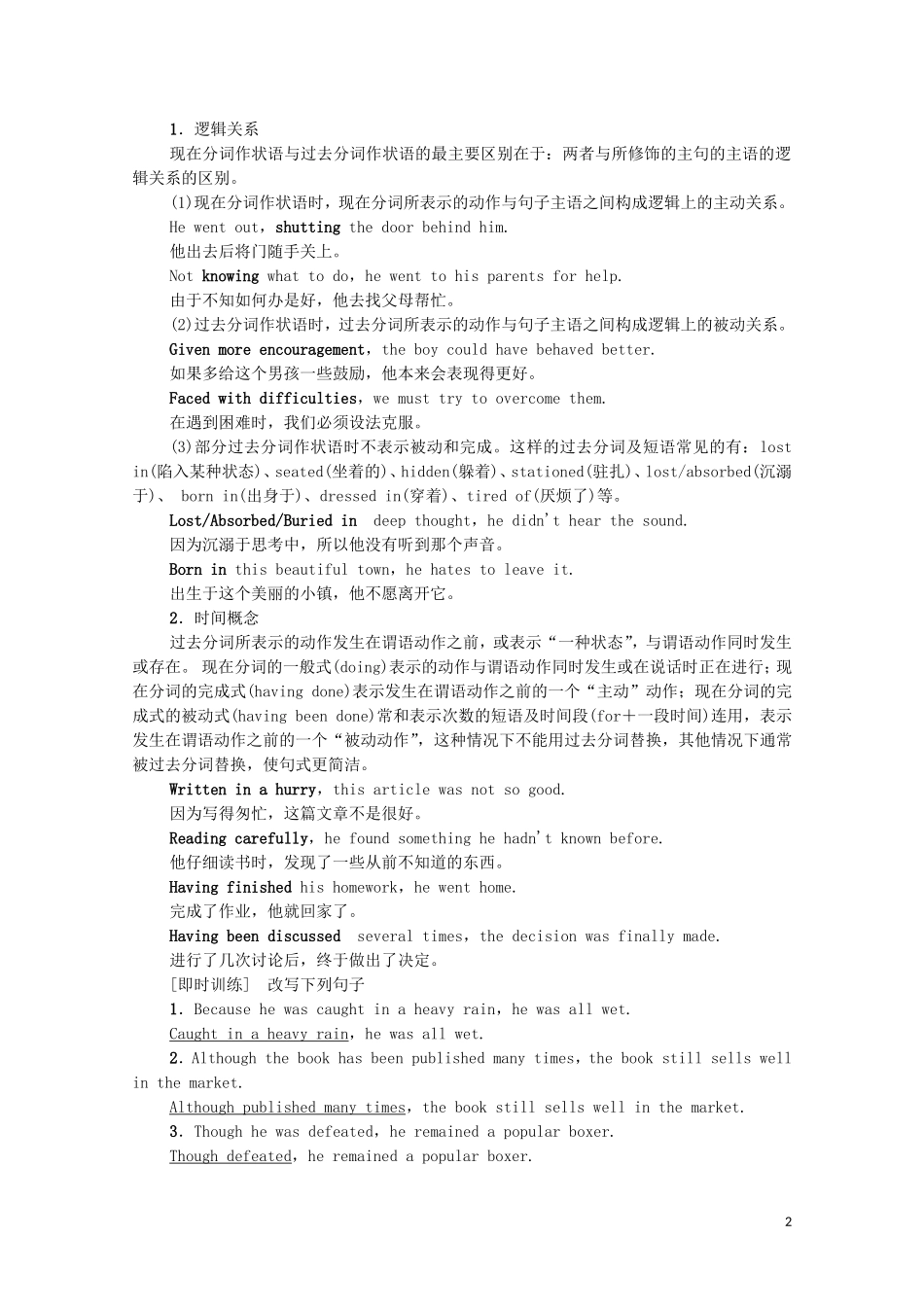Section Ⅲ Using language过去分词作状语过去分词兼有动词、副词和形容词的特征。 过去分词作状语时,表示被动的或已完成的动作,在句中可作时间、原因、条件、让步、方式、伴随状语等。过去分词(短语)作状语时,其逻辑主语通常就是句子的主语。过去分词(短语)作状语一般都用逗号同其他成分隔开。[观察例句]阅读下列句子,并体会黑体部分的用法1.Disappointed by his behaviour,I said all this to my best friend.2.Treated this way,you're sure to feel hurt.3.Approached in this way,your friendship will soon be repaired.4.Filled with anger,you tend to say whatever comes to your mind.5.Lost in deep thought,he didn't hear the sound!6.The signal given,the bus started.7.When given a medical examination,you should keep calm.[归纳用法]一、过去分词作状语的具体用法1.作时间状语时,可转换为 when 或 while 等引导的从句,通常放在句首。如:Seen from the top of the hill( = When it is seen from the top of the hill),the school looks like a big garden.从山顶上看,学校像一个大花园。2.作条件状语时,可转换为 once,if 或 unless 等引导的从句,一般放在句首。如:Given more attention(=If it was given more attention),the fire could have been avoided.如果多注意一下,大火或许可以避免。3.作原因状语时,可转换为 because,as 或 since 等引导的从句,多放在句首。如:Encouraged(=As she was encouraged) by the teacher,the girl was very happy.因为受到老师的鼓励,这个女孩很开心。4.作让步状语时,可转换为 though,although 或 even if 引导的从句,常放在句首。如:Left(=Although she was left) alone at home,Jenny didn't feel afraid at all.尽管被单独留在了家里,珍妮一点也不害怕。5.作方式或伴随状语时,常可转换为并列分句,可位于句首或句末。如:Surrounded by his students,the teacher went into the lab.(= The teacher was surrounded by his students and he went into the lab.)老师在学生的簇拥下进入了实验室。6.过去分词(短语)作状语时,有时为了强调,前面可带连词 when,while,i...


